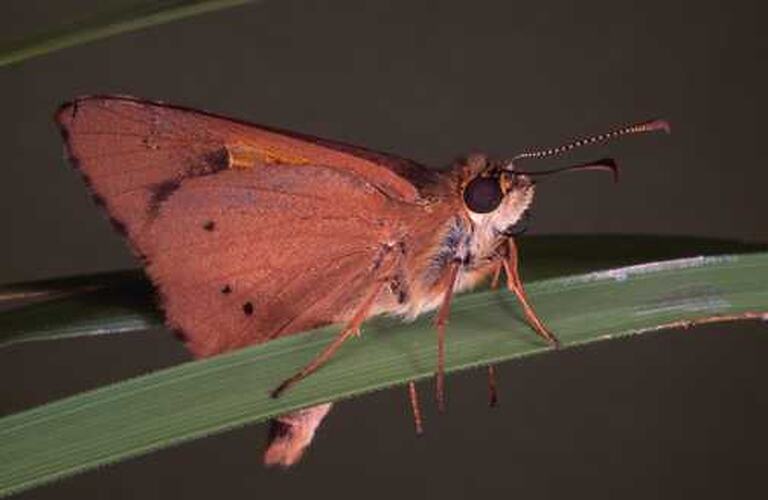General Description
Above: dark brown with yellow to orange spots to wings, more extensive in females than males. Below: orange-brown with central brown-black area to forewing and hindwing with a row of small black dots. Wingspan up to 4 cm.
Biology
Flame Sedge-skipper butterflies are present from November to March. Their caterpillars feed on saw-sedge plants, particularly Thatch and Red-fruit Saw-sedges, and also use the plants to hide during the day in shelters formed from the leaves.
Distribution
South-eastern mainland Australia and Tasmania.
Habitat
Forested mountains and their surrounding hills, coastal areas and open eucalypt forests.
More Information
-
Animal Type
-
Animal SubType
-
Brief Id
Hooked antennae, without eyespots, without tails on hindwing.
-
Colours
Brown, Yellow
-
Habitats
-
Diet
Nectar
-
Endemicity
-
Conservation Statuses
CITES: Not listed, FFG Threatened List: Not listed, DSE Advisory List: Not listed, IUCN Red List: Not listed
-
Plants
Saw-sedges
-
Flight Start
November
-
Flight End
March
-
Taxon Name
-
Scientific Author
Miskin, 1889
-
Common Name
Flame Sedge-skipper
-
Kingdom
-
Phylum
-
Subphylum
-
Class
-
Subclass
-
Superorder
-
Order
-
Suborder
-
Superfamily
-
Family
-
Subfamily
-
Genus
-
Species Name
idothea

